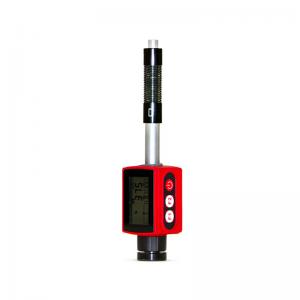
Add to Cart
MH100 Portable hardness tester based on the principle of Leeb hardness testing theory. With the delicate design,unique style,it can measure the Leeb hardness of all metallic materials.It has high-contrast Segment LCD ,easy to use.Also support Steel ,when using D sensor to test steel,it can show HB directly. The storage is large : 100 groups (impact times 32 ~ 1) hardness measurements, each set of data includes single testing value,average value, measurement date / time, impact direction, frequency, material, hardness, and other information.
Real-time display the remaining battery power, charging progress is displayed while charging.USB interface to PC for data communicationData processing software can do transmission measurements, the measured value storage management, statistical analysis of the measured value, the measured value of the print report and batch set the instrument parameters .Integrated compact design, small size, portable, highly integrated, stable and reliable performance, suitable for harsh environment field operations, prevent from vibration, shock and electromagnetic interference.

The energy quotient is quoted in the hardness unit HL and is calculated from comparing the impact and rebound velocities of the impact body. It rebounds faster from harder samples than from softer ones, resulting in a greater energy quotient which is defined as 1000×Vr/ Vi.
HL=1000×Vr/ Vi
Where:
HL— Leeb hardness value
Vr — Rebound velocity of the impact body
Vi — Impact velocity of the impact body

-Press the release button on the upside of the impact device to test. The sample and the impact device as well as the
operator are all required to be stable now. The action direction should pass the axis of the impact device.
-Each measure area of the sample usually need 3 to 5 times of testing operation. The result data dispersion should not
more than mean value±15HL.
-The distance between any two impact points or from the center of any impact point to the edge of testing sample
should conform to the regulation of Table 4-1.
-If want accurate conversion from the Leeb hardness value to other hardness value, contrastive test is needed to get
conversion relations for the special material. Use inspection qualified Leeb hardness tester and corresponding
hardness tester to test at the same sample respectively. For each hardness value, each measure homogeneously 5
points of Leeb hardness value in the surrounding of more than three indentations which need conversion hardness,
using Leeb hardness arithmetic average value and corresponding hardness average value as correlative value
respectively, make individual hardness contrastive curve. Contrastive curve at least should include three groups of
correlative data.
